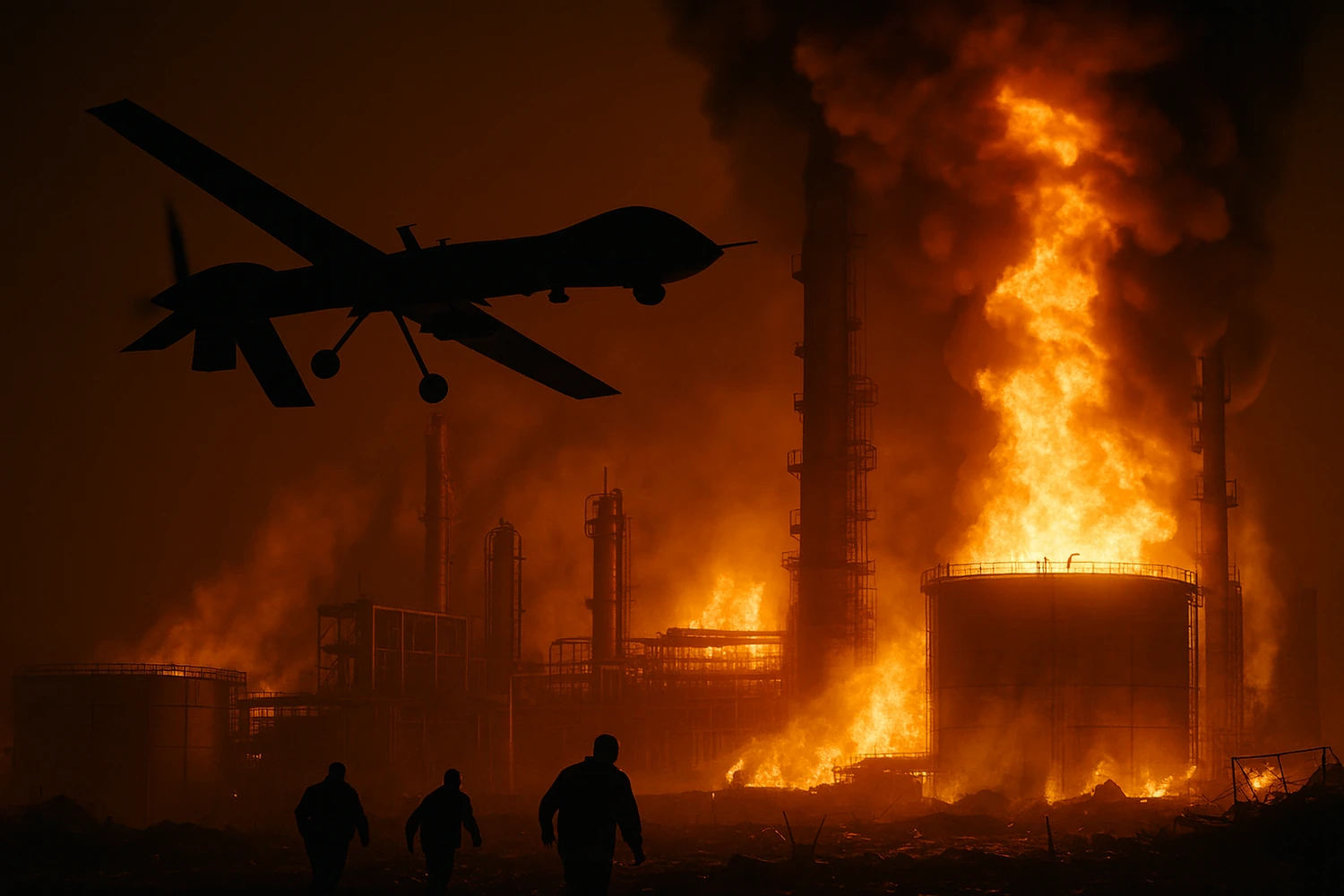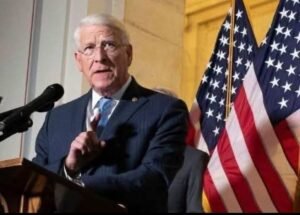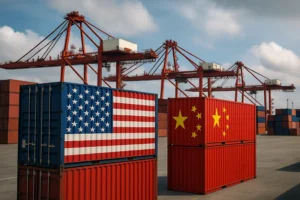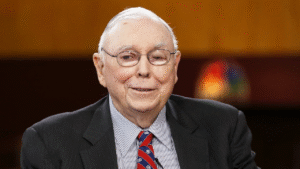Russia’s latest overnight barrage killed civilians in Dnipro, but Ukraine answered with drone strikes that lit up refineries hundreds of kilometers inside Russian territory. The Ukraine war 2025 is no longer about holding lines — it is about exposing Moscow’s weak underbelly and forcing NATO to admit that this is no longer a local war.
Context: The mainstream narrative
Mainstream outlets still frame the conflict as attritional. They highlight Russia’s massed missile and drone salvos, stressing the damage to Ukraine’s cities. They emphasize UNGA speeches, Trump–Zelensky meetings, and NATO’s cautious assurances. The narrative suggests Ukraine survives only by Western support while Russia dictates the tempo.
Yes, Russia continues to pound Ukrainian cities: Dnipro, Zaporizhzhia, Mykolaiv. Civilians suffer blackouts and fires. The Kremlin wants the world to see Ukraine as defenseless. On the surface, Moscow appears to dictate escalation.
Oppositional Argument: Ukraine flips the battlefield
That story is incomplete. Ukraine war 2025 is defined not by survival but by reach. Long-range Ukrainian drones ignited the Saratov and Novokuybyshevsk refineries, cutting into 10% of Russia’s refining output in a single night. The Samara pumping hubs — vital arteries feeding Novorossiysk exports — went up in flames.
Ukraine is no longer the besieged victim. It has flipped the script, striking 700 kilometers inside Russia, forcing Moscow to reroute oil and scramble emergency crews. This isn’t attrition — it’s asymmetric escalation that targets Russia’s economic core.
Analytical Breakdown: Causes and consequences
Ukraine’s strikes reveal a vulnerability Russia cannot mask. Fuel infrastructure is soft, dispersed, and impossible to shield. A refinery fire does not just halt local operations; it ricochets across export schedules, bunker fuel allocations, and insurance markets. Every drone that slips through creates a domino effect.
Meanwhile, Russia’s manpower crisis deepens. Recruitment fell to 37,900 in Q2 2025, far below casualty replacement levels. Commanders send sick and unfit soldiers into doomed assaults around Pokrovsk. Russian propaganda cannot hide the fact that Ukraine is killing men faster than Moscow can replace them.
The consequences ripple outward. European capitals now debate not whether but how to channel frozen Russian assets into regular transfers to Kyiv. Market chatter already reflects higher premiums for Black Sea cargoes. The Ukraine war 2025 is tilting the economic battleground against Russia.
Human Perspective: Civilians under fire, soldiers overstretched
Dnipro’s civilians paid the price of Moscow’s rage: warehouses destroyed, residential blocks ripped apart, dozens injured. Mykolaiv burned as fragments fell on factories. Families in Sofiivska Borshchahivka woke to fires in their driveways. This is the human cost of a war Moscow insists is far away from its heartland.
But Russia’s civilians are feeling it too. Saratov commuters watched refineries burn on their way to work. Samara residents filmed explosions at pumping stations. For the first time, Russians glimpse what Ukraine lives with daily. That shift matters — wars end not only on the battlefield but when domestic audiences lose faith.
Counterarguments
Some argue Ukraine risks overextending, that deep strikes provoke harsher Russian retaliation. Yet Moscow is already bombing civilians relentlessly. Fear of escalation is a hollow excuse. Others claim refinery hits are symbolic. Wrong. Each fire disrupts logistics, cuts export earnings, and erodes Moscow’s war machine. Symbolism becomes strategy when repeated with precision.
Conclusion: The war’s new front is economic
The Ukraine war 2025 is no longer confined to Donbas trenches or Kyiv’s skies. It stretches into Russia’s oil heartland, into NATO airspace, into global insurance markets. Ukraine has proven reach; Russia has exposed weakness.
The West must stop pretending this is a frozen conflict with predictable lines. It is a shifting war of endurance, reach, and legitimacy. Kyiv is rewriting the battlefield. The question is whether Washington, Brussels, and NATO capitals are willing to keep pace — or let Russia’s crumbling empire drag the world deeper into chaos.
External Links
187 views





